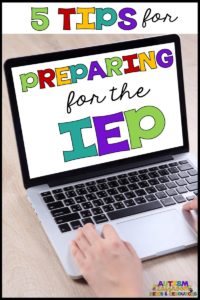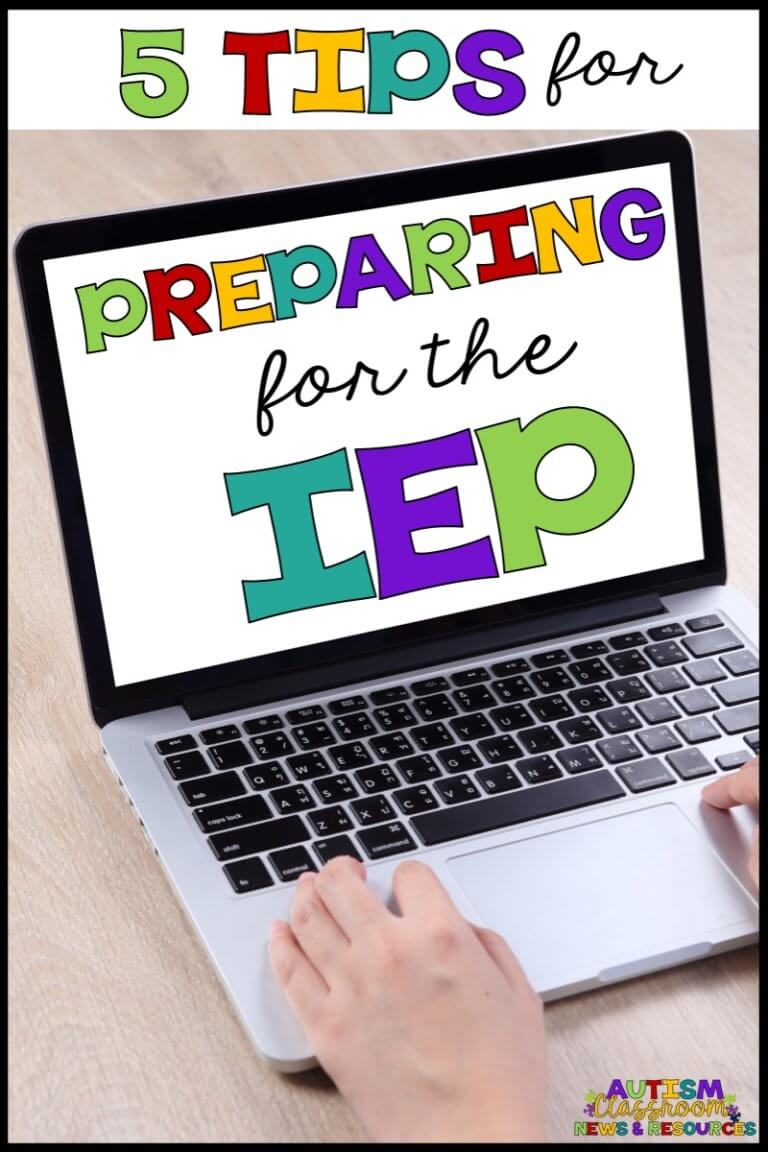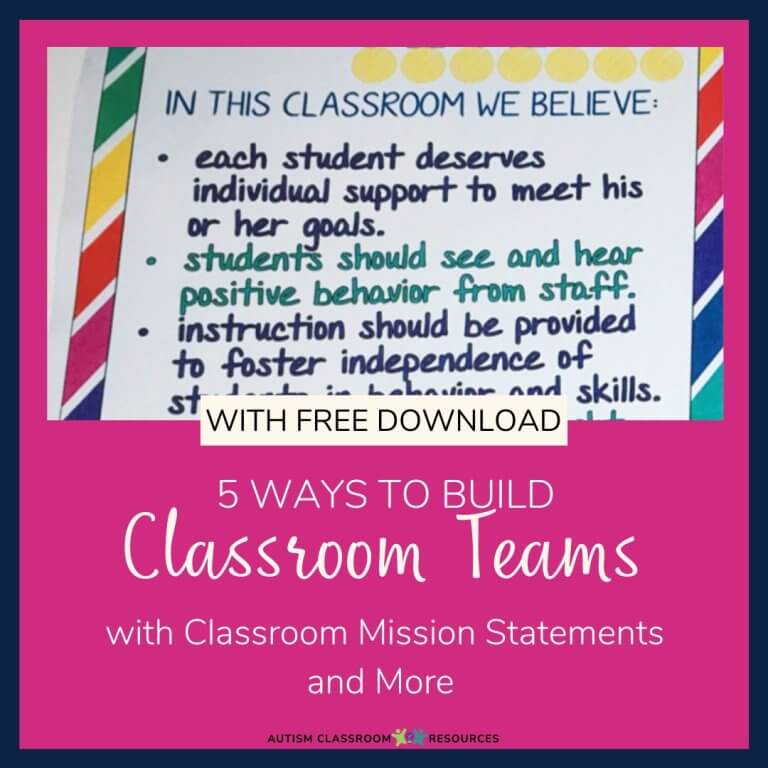
 Having an IEP go smoothly is one of the best building blocks for a child’s educational program. An IEP that goes smoothly results from true collaboration between families and schools. It also doesn’t just happen. IEPs, both the documents and the process, are hard work and require a good bit of preparation and thought before the IEP is even drafted. Now, there are lots of legal requirements that are covered pretty extensively by most district trainings, but I want to talk about the less “legalistic” issues and focus more on how to make the IEP as productive as it can be. Because the quote to the below is absolutely accurate. It takes a whole orchestra to play a symphony and child with autism is even more complex than that. So, I talked in the last post about some general considerations and have been struggling with how to organize the posts. I’ve decided to go in chronological order. So, before you put pen to paper to write a draft and possibly even before you set the date for the meeting, consider doing these 5 things to set the process up for success.
Having an IEP go smoothly is one of the best building blocks for a child’s educational program. An IEP that goes smoothly results from true collaboration between families and schools. It also doesn’t just happen. IEPs, both the documents and the process, are hard work and require a good bit of preparation and thought before the IEP is even drafted. Now, there are lots of legal requirements that are covered pretty extensively by most district trainings, but I want to talk about the less “legalistic” issues and focus more on how to make the IEP as productive as it can be. Because the quote to the below is absolutely accurate. It takes a whole orchestra to play a symphony and child with autism is even more complex than that. So, I talked in the last post about some general considerations and have been struggling with how to organize the posts. I’ve decided to go in chronological order. So, before you put pen to paper to write a draft and possibly even before you set the date for the meeting, consider doing these 5 things to set the process up for success.1. Get Parents’ Input
Consider sending home a form that asks families for their input prior to setting up the IEP meeting. Ideally, we would sit down with every team and write the IEP from scratch after everyone has shared their information about the student and their wishes. However, in a time-pressed world, typically, neither you nor the family has time to do this. Having the parents’ input into what they want out of the IEP goes beyond just a vision statement that most IEP forms require. It involves finding out what they see as the child’s strengths and needs, how the skills you are seeing (or not seeing) in the classroom are being seen at home, and what they want for their child in the future. In addition, asking a family “What do you want for your child?” is a pretty broad question and I would venture that most parents of all children would have difficulty answering it off the top of their head. So, think ahead and send home a questionnaire or some type of communication that directly asks questions about information regarding the student’s behavior at home, his skills at home, and what they perceive his needs and strengths to be. Choose or develop a form that is concrete and asks specific questions. There are some examples from Madison City, AL schools; one from Special School District of St. Louis County, and one from Schwab Learning that is designed for parents to use to take to the IEP meeting but might give you some ideas of what to include. These are just examples but will give you an idea of what might work for your families.
2. Organize Your Assessments
Determine what curriculum-based assessments you need to complete or update as well as what your data tells you about the child’s progress and needs. This will be critical to making sure that the present level of performance addresses the current needs. While it’s tempting to write a present level off the one from last year, I encourage teachers to start from scratch. Otherwise, we sometimes end up with present levels that don’t change from year to year or don’t reflect new information well as time goes on. Consider updating any social skills checklists, behavior observations, and communication skills information in addition to academic skills, as these are going to be critical areas for a student on the spectrum and also for many of our other students. Organize all this information so that it feeds into the present level as well as so that you can share it with the family at the meeting. This makes it clear what your present levels are based on. Also make sure that you have updated the present goals and make sure to plan to review that update at the beginning of the meeting. It can be very confusing when we miss this step and don’t review the prior progress before moving on to new goals and objectives.
3. Prepare to Talk about Your Experience
If this is the first time you are working with this student (e.g., he’s coming to your class next year) or if there have been concerns from the parents about anything, be prepared to talk about your teaching experience and qualifications. You are working with their child all day 5 days a week; it’s only normal that parens would want to know how qualified you are for the job. Don’t assume that just because you know you are qualified that the parents will trust and assume that. I’ve been in many situations where teachers were extremely qualified to teach a student on the spectrum, but they became defensive when parents asked about their qualifications. Think about it. If I have to have surgery, I want to make sure that the surgeon is qualified to do the job well. I have the opportunity to see his or her diplomas on the wall, I get referrals from my other doctors and friends, I check out the hospital, etc. I may even ask the doctor how many times he or she has performed that particular operation. What you do everyday as a teacher is as important as surgery and some parents would say it’s even more critical because you do it everyday and their children often can’t tell them about their day. So first, don’t take it personally if someone asks about your qualifications. Then I suggest taking it to the next level. Prepare a professional portfolio of pictures and information from previous classrooms you have run. Save examples of schedules, pictures of visual supports, examples of data collection procedures, and other examples that show how you have adapted your instruction to meet the needs of individual students. Talk about the training you have had. To help with this, I will write my next post on what this type of portfolio might look like and what you might want to include. Gather this information before you get to the meeting.
4. Set Up the IEP Meeting Time Taking Families Into Account
I know it’s not possible to have all your IEP meetings after the end of the workday. However, it is important to recognize that families have lives outside their children just like you do. This means they have jobs and commitments and can’t necessarily just drop everything to come to an IEP meeting. However, we will need to think outside the box to some degree if possible and hold IEPs at different times than school hours, if it’s allowed. Also, consider setting up dates for more than one meeting if you anticipate that it is going to be a long meeting. Let’s face it: after about 2 hours, we are all pretty out of it and it’s hard to really track new information. If you think it is hard for you, imagine how it feels to the family.
Sometimes it’s better to have 2 shorter meetings than 1 long marathon, and if you plan ahead of this and you finish early, that’s a free time the team has to do the many other things that need to be done. So, when trying to schedule it, there are several strategies you can use.
- Send home multiple times and ask what works for them.
- Use online technology like Doodle to find out what time works for them and other team members
- Call the parents and find times that are good for them and then schedule in the team
5. Send Home a Draft of the IEP
Resources
Share it:
- Read more about: Leadership & Collaboration, Working with Families









